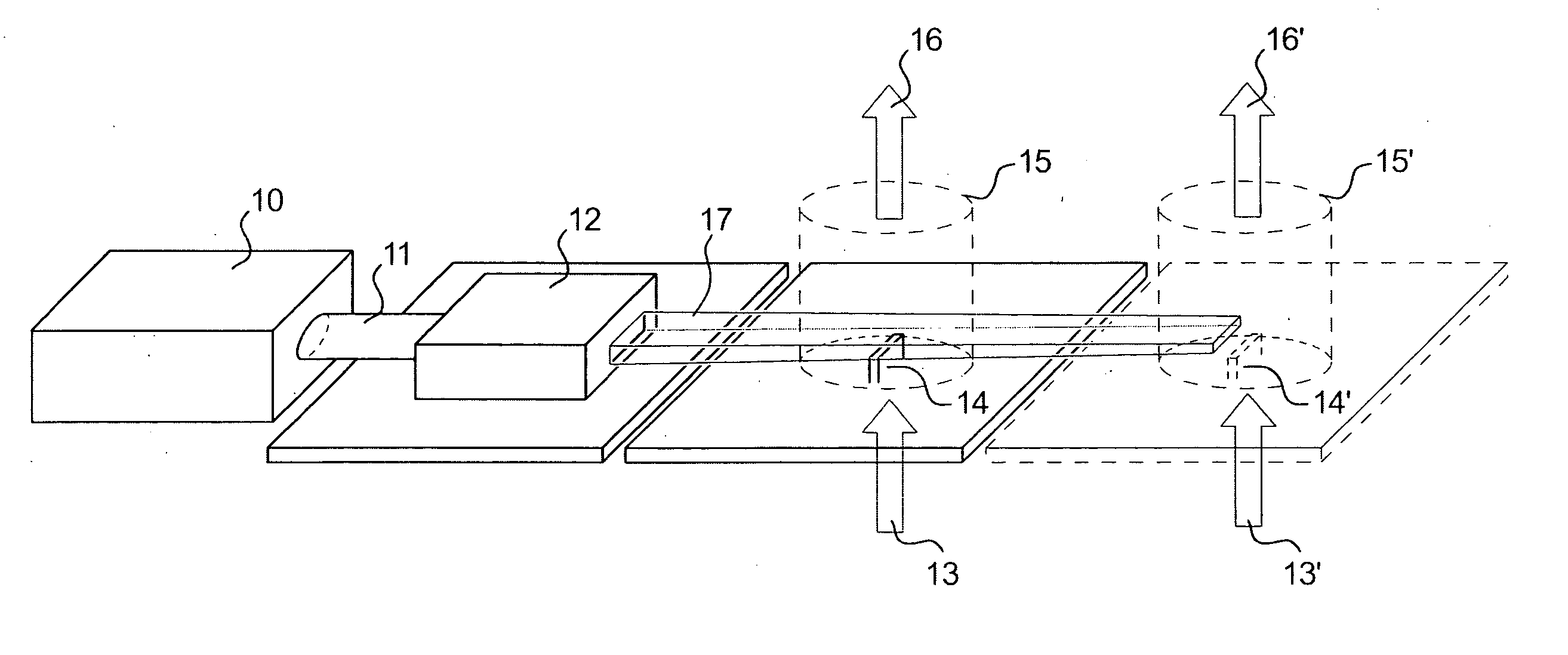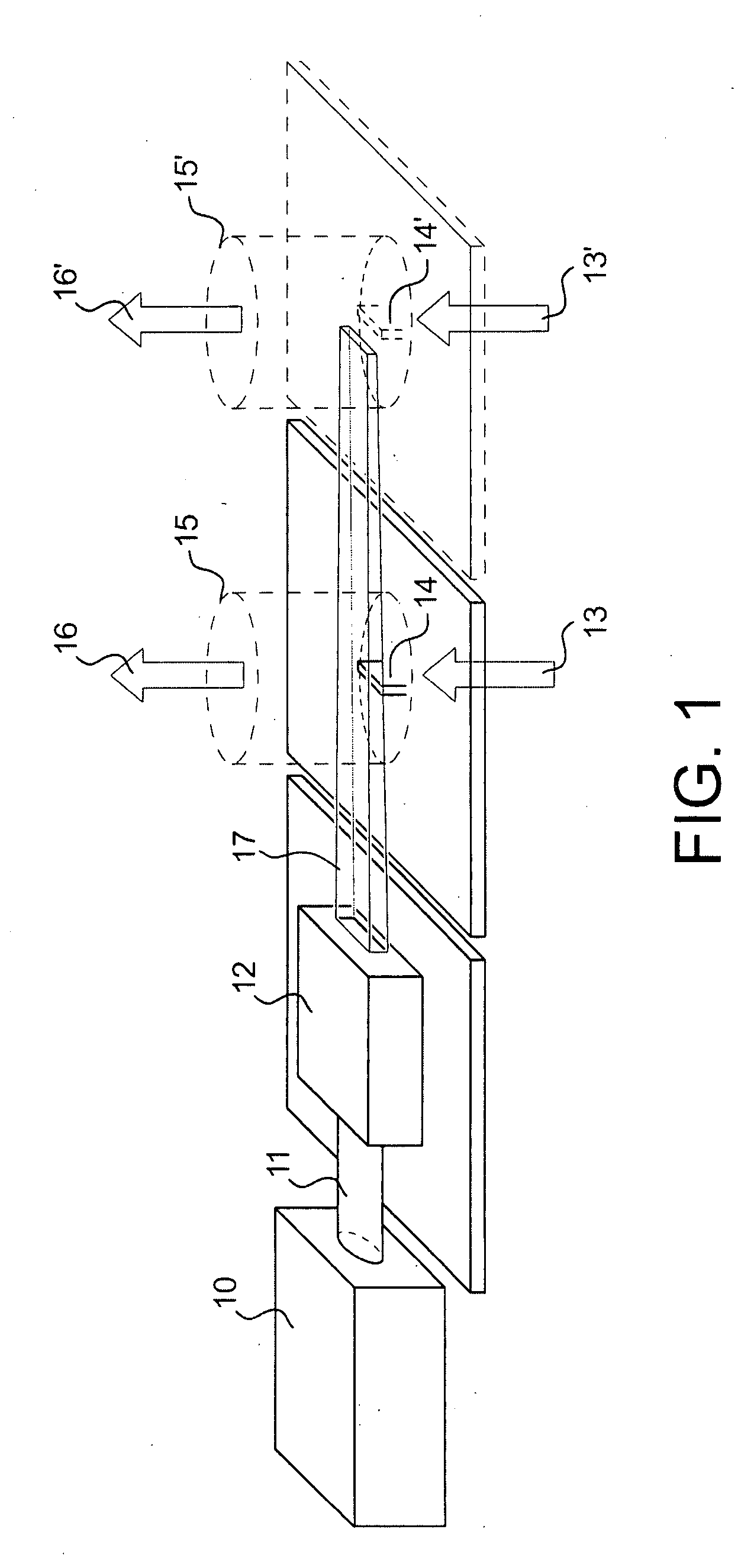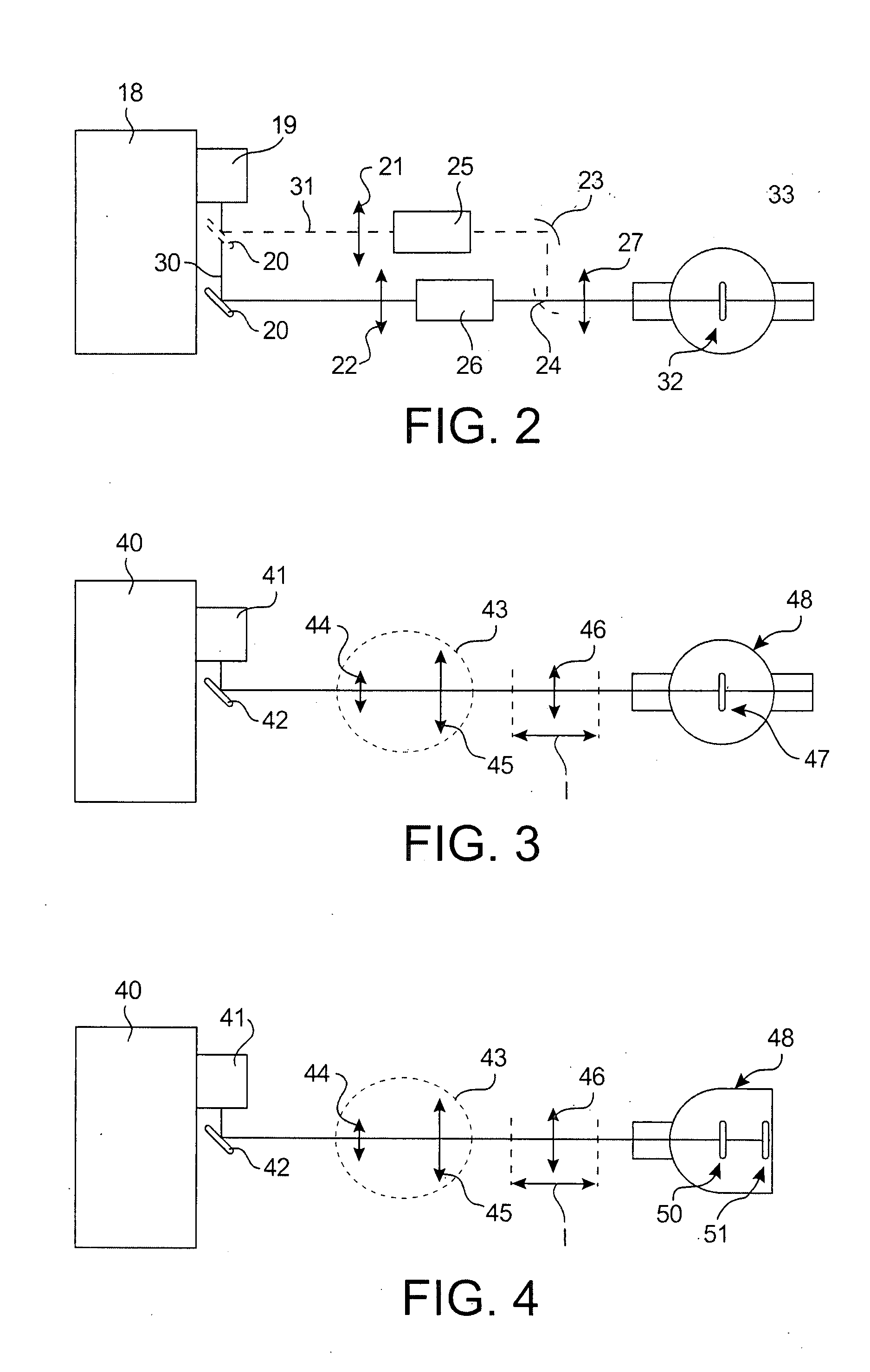System and Process for Production of Nanometric or Sub-Micrometric Powders in Continuous Flus Under the Action of a Pyrolysis Laser
a technology of laser pyrolysis and nanometric powder, which is applied in the direction of laser beam welding apparatus, chemical/physical/physico-chemical processes, high temperature gas-gas reaction, etc., can solve the problems of nanometric powder production process, nanometric powder availability and cost, and nanometric powder availability
- Summary
- Abstract
- Description
- Claims
- Application Information
AI Technical Summary
Benefits of technology
Problems solved by technology
Method used
Image
Examples
example 1
Production of Nanometric SiC Powders by Using a 5 kW Laser
[0028] In this first example, as shown in FIG. 2 in a plan view, the system of the invention comprises a 5 kw CO2 laser 18 emitting at 10.6 μm and having a 17 mm cross-section, a periscope 19, a flat mirror 20, spherical lenses 21, 22 and 27, spherical mirrors 23 and 24 and two kaleidoscopes 25 and 26. Two possible embodiments, corresponding to two routes 30 and 31 of the laser beam are possible. The first route 30 creates a beam cross-section of 50 mm in width and 10 mm in height. The beam is first reflected by the flat mirror 20 then passes through the spherical lens 22, the kaleidoscope 26 and the spherical lens 27. The second route 31 corresponds to a beam cross-section of width 50 mm and height 300 μm. The beam is first reflected by the flat mirror 20, the position of which is changed relative to the previous mode, then it passes through the spherical lens 21, the kaleidoscope 25, and is reflected by the spherical mirro...
example 2
Production of Nanometric SiC Powders from a Mixture of Silane (SiH4) and Acethylene (C2H2) by Using a 1 kW Laser
[0033] As shown in FIG. 3, the system of the invention comprises an laser 40, a periscope 41, a flat mirror 42, an afocal 43 and a cylindrical lens 46. The afocal 43 helps to enlarge the size of the beam to the desired dimension in width at the level of the interaction zone with the flux of reagents. It can be composed of two convergent cylindrical lenses 44 and 45, its magnification being supplied by the ratio of the focal distances of these lenses.
[0034] Once the cross-section of the beam is magnified, the cylindrical lens 46 focuses the beam at the level of the interaction zone 47 with the flux of reagents in the reactor 48. The width in cross-section of the beam is defined by the afocal. By varying the position of the lens over a length l, the height in cross-section of the beam can be varied at the level of the synthesis zone (when viewed more or less far from the f...
example 3
Production of Nanometric SiC Powders from a Mixture of Silane (SiH4) and Acethylene (C2H2) by Using a 5 kW Laser
[0036] This example corresponds to the previous example applied to a multi-zone system 50 and 51 illustrated in FIG. 4. Several reagent injectors consume maximum power for synthesis. In this case, the losses by absorption are compensated by the concentration of the beam and it is simply a matter of positioning the injectors such that the incident power density is identical to the entry of the reagent beam from one injector to the other. In the previous example, as it leaves the lens 46, the beam converges. By placing a first injector in front of the focal point, other injectors can be placed one after another. The parameter defining the positioning of the injectors relative to one another is thus the power density. This is the ratio of the incident power on the surface of the cross-section of the beam. The preferred value for this parameter depends on the nature of powder...
PUM
| Property | Measurement | Unit |
|---|---|---|
| Length | aaaaa | aaaaa |
| Material consumption rate | aaaaa | aaaaa |
| Material consumption rate | aaaaa | aaaaa |
Abstract
Description
Claims
Application Information
 Login to View More
Login to View More - R&D
- Intellectual Property
- Life Sciences
- Materials
- Tech Scout
- Unparalleled Data Quality
- Higher Quality Content
- 60% Fewer Hallucinations
Browse by: Latest US Patents, China's latest patents, Technical Efficacy Thesaurus, Application Domain, Technology Topic, Popular Technical Reports.
© 2025 PatSnap. All rights reserved.Legal|Privacy policy|Modern Slavery Act Transparency Statement|Sitemap|About US| Contact US: help@patsnap.com



